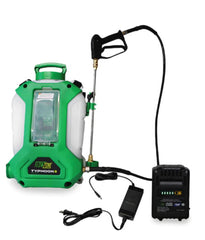How to Get Rid of Aphids in Your Garden
What are those insects eating up the greenery throughout your garden? Most likely, you’re looking at an invasion of aphids—and you must act fast to save your plants. Here’s everything you need to know about getting rid of aphids, including the best types of do-it-yourself aphid control methods and all-natural solutions.
What are Aphids?

Aphids are small, soft-bodied insects that suck the nutrient-rich liquids out of plants. Almost everyone agrees: It’s important to get rid of aphids because they weaken plants significantly, feeding on flowers and fruit.
Aphid treatment is crucial because they multiply quickly—in fact, many generations are birthed during one season. However, because they move more slowly than other insects, finding an effective aphid control method for your growing spaces and diligently enacting it before they reproduce will help keep them in check.
What Does an Aphid Look Like?
It’s not always easy to identify an aphid because they’re so tiny that they often appear invisible to the human eye. Adult aphids are under one-quarter-inch long. They have pear-shaped bodies with long antennae, and most aphids have two short tubes (or cornicles) sticking out of their hind end.
They are typically wingless. However, many can develop wings to travel and reproduce the colony if a food source fails due to a lack of aphid control. (Their capability of moving from plant to plant makes it extremely hard to get rid of aphids if they multiply faster than you can implement an aphid treatment solution.)
Various species of aphids can appear white, black, gray, or brown, while others are a more colorful yellow, light green, red, and even pink. Some have a waxy or wooly coating. Aphids shed their exoskeletons as they grow, leaving a white cast skin.
Common Types of Aphids You May Spot in Your Garden

There are many types of aphids throughout the United States. Ironically, the insects are often named after the types of plants or crops they destroy. Some common aphids include:
- The green peach aphid
- The cabbage aphid
- The melon or cotton aphid
- The rose aphid
- The potato aphid
- The oleander aphid
- The wooly apple aphid
What Does Aphid Damage Look Like?
Before implementing a garden insect control method to get rid of aphids, you’ve got to know what you’re looking for. They all thrive on plant juices, but depending on the type of aphid, they attack leaves, stems, buds, flowers, fruit, or roots.
Leaves mauled by aphids are typically misshapen, yellow, stunted, or curling, with aphids hiding underneath the leaves. Flowers or fruit become distorted after aphids eat them. And if the leaves or stems seem sticky, the aphid has left behind its customary “honeydew” secretion—a sugary substance and key indicator that the aphids have been sucking tree sap. The honeydew can encourage a fungal growth called “sooty mold” that leaves tree branches black.
Easy Methods to Get Rid of Aphids
Because they’re so common, it might seem daunting to find an adequate aphid treatment to protect your plants from these unruly pests. However, there are several easy and effective aphid control methods to get rid of aphids once and for all (and you won’t even need your garden tools to accomplish most of them):
- Use a do-it-yourself (DIY) solution
- Use an all-natural insecticide
- Use plants to your advantage
DIY Solution to Get Rid of Aphids
- Remove aphids with water: The fastest, and certainly one of the easiest, DIY aphid treatment methods sits ready just outside your back door. Simply turn on your water hose and spray impacted plants vigorously. The steady stream of water works well to knock aphids off mature plants that tolerate high water pressure and is a good aphid control method when they’re just starting to multiply. Once they’ve been sprayed off a plant, they rarely come back.
- Treat aphid infestations with essential oils: Essential oils provide an all-natural aphid treatment. Neem oil is an excellent method for aphid control. Dilute the neem oil in water before spraying the mixture on affected plants and watch them fall away.
Likewise, mix water with equal parts of peppermint, clove, rosemary, and thyme oils (4-5 drops of each should be sufficient). Spray this aphid treatment mixture on both sides of the leaves for best results.
- Wash aphids away with dish soap: Water and dish soap also offer an easy, DIY solution for getting rid of aphids. Just mix a quart of water with a few tablespoons of dish soap and squirt the affected plants, soaking the undersides of the leaves where the eggs and larvae hide. Or knock the aphids right off the plants into the soapy water. The soap serves as an aphid control solution by smothering the aphid.
- Squash the buggers: And last, and certainly not for the faint of heart, one surefire aphid control method? Crush them with your fingers. Simply rub your thumb and forefinger over any visibly impacted plant. Aphids are soft, delicate creatures that won’t be able to withstand this simple form of aphid treatment.
Use an All-Natural Insecticide to Get Rid of Aphids
Sometimes, you need more power than the DIY route can take you. That’s when you should rely on an organic insecticide, like PureCrop1 from Rocky Mountain BioAg®, which will serve as an aphid treatment without harming your plants, pets, or children.
Use Plants to Your Advantage to Get Rid of Aphids
You can use your plants as a crucial aphid treatment mechanism in two important ways. First, choose plants that act as a natural aphid repellent. Catnip, garlic, chives, onions, and allium all act as natural aphid control, keeping the insects at bay.
Likewise, plant some flowers and herbs that act as aphid traps. Zinnias, dahlias, cosmos, and asters all serve as natural aphid treatments. When planted strategically just slightly away from other plants aphids love, they’ll trap the aphids. (A great example of this is to grow lavender, basil, chives, and marigolds as an aphid control solution for your tomato plants.)
Implementing healthy garden maintenance is also key. Staying on top of your organic garden fertilizer schedule and weeding regularly will help get rid of aphids. Likewise, test your soil’s health year-round using a microbiometer to determine which nutrients are needed for your plants to thrive, and use RMBA’s mineral amendments to keep your soil in tip-top shape.
Are There Any Types of “Good” Aphids?

While these pesky insects aren’t considered good, some advocates insist that getting rid of aphids is a bad idea in and of itself. While aphids are a feeding nuisance to your plants, they also serve as good grub for other insects that are beneficial for your garden, like ladybugs and lacewings.
Bottom line: If your aphid treatment method consists of keeping enough of them around to be eaten by the good insects, which in turn help to pollinate flowers and keep other pests at bay, then that’s a reasonable solution. Just make sure you implement other aphid control measures we’ve listed above before they get out of hand and ruin your hard gardening work.







Leave a comment